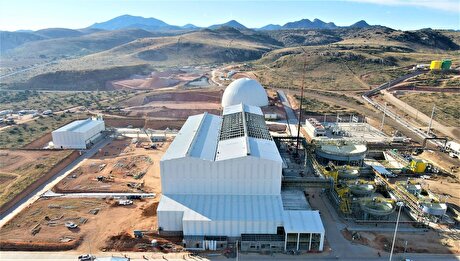
NIOC Positive About New Oil, Gas Deals

Tehran may sign several oil and gas deals soon, building up on a raft of preliminary agreements with energy majors as it gradually opens up its huge energy sector to multinationals and foreign investments.
"We have signed 12 memoranda of understanding with foreign companies and 10 to 12 more agreements are expected to be signed soon in the upstream oil and gas sector," Gholamreza Manouchehri, deputy for engineering and development at the National Iranian Oil Company was quoted as saying by ISNA on Monday.
 Iran has the world's second-largest proven gas reserves and the fourth-largest crude oil reserves.
Iran has the world's second-largest proven gas reserves and the fourth-largest crude oil reserves.
A growing number of energy firms, including Total S.A., Anglo-Dutch energy major Royal Dutch Shell, China National Petroleum Corp, Japan's INPEX and Malaysia's Petronas have signed provisional agreements to study Iran's massive underground oil and gas reservoirs in a bid to eventually develop the fields.
The official said oil and gas development in Iran is attractive to foreign companies because of the relatively lower costs of oil and gas production/exploration in the country.
A barrel of Iranian crude costs less than $10 to produce, making Iran one of the world's most attractive places for exploration and production after Saudi Arabia and ahead of Iraq, the Wall Street Journal said in April.
UK oil is the world's most expensive crude to produce, costing roughly $44 a barrel. Oil production in Brazil, Nigeria, Venezuela and Canada is also costlier than in the US, the report said, as drillers in the United States have adopted more efficient technologies to adapt to persistently low oil prices that have weighed on the global markets in the past two and a half years.
According to reports, US shale drillers have cut the costs of producing new oil supplies by as much as 40% since oil traded above $100 a barrel more than two years ago.
Manouchehri also noted that Iran's security and stability in the region shores up long-term investments, particularly in some upstream petroleum projects that require a significant initial investment before production begins.
Investment Prospects
Manouchehri noted that a flurry of foreign trade delegations from 14 countries, including from the US, China, Italy, France and South Africa, are expected to visit Iran next month for the 13th International Petro Energy Exhibition (Kish Enex 2017) to learn more about investment prospects in the oil, gas, petrochemical, electricity, water and renewables sectors.
The exhibition is scheduled to be held in Kish Island in the Persian Gulf on January 9-12.
Iran is planning to hold tenders for dozens of oil and gas projects next year to tap into its large hydrocarbon deposits in cooperation with multinationals. Tehran hopes the tenders will lead to signing 20-year contracts that entail a five-year exploration and development period and 15 years for production.
Iranian Central Oil Fields Company said last week that 10 international tenders will be held for selected oilfields in the central and western regions in 2017.
Iran has the world's second-largest proven natural gas reserves (34 trillion cubic meters) and the fourth-largest crude oil reserves (157 billion barrels). Based on estimates, Iran can draw on its oil and natural gas reservoirs for at least 50 and 80 years respectively, excluding the new discoveries.


Trump weighs using $2 billion in CHIPS Act funding for critical minerals

Electra converts debt, launches $30M raise to jumpstart stalled cobalt refinery

Codelco cuts 2025 copper forecast after El Teniente mine collapse

Barrick’s Reko Diq in line for $410M ADB backing

Abcourt readies Sleeping Giant mill to pour first gold since 2014

SQM boosts lithium supply plans as prices flick higher

Nevada army depot to serve as base for first US strategic minerals stockpile

Pan American locks in $2.1B takeover of MAG Silver

Viridis unveils 200Mt initial reserve for Brazil rare earth project

Kyrgyzstan kicks off underground gold mining at Kumtor

Kyrgyzstan kicks off underground gold mining at Kumtor

KoBold Metals granted lithium exploration rights in Congo

Freeport Indonesia to wrap up Gresik plant repairs by early September

Energy Fuels soars on Vulcan Elements partnership

Northern Dynasty sticks to proposal in battle to lift Pebble mine veto

Giustra-backed mining firm teams up with informal miners in Colombia

Critical Metals signs agreement to supply rare earth to US government-funded facility

China extends rare earth controls to imported material

Galan Lithium proceeds with $13M financing for Argentina project

Kyrgyzstan kicks off underground gold mining at Kumtor

Freeport Indonesia to wrap up Gresik plant repairs by early September

Energy Fuels soars on Vulcan Elements partnership

Northern Dynasty sticks to proposal in battle to lift Pebble mine veto

Giustra-backed mining firm teams up with informal miners in Colombia

Critical Metals signs agreement to supply rare earth to US government-funded facility

China extends rare earth controls to imported material

Galan Lithium proceeds with $13M financing for Argentina project

Silver price touches $39 as market weighs rate cut outlook

















